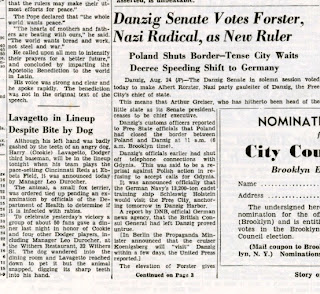It happened a little over ten years ago. Brooklyn Girl had just gotten off the plane in Los Angeles and was making her way through the terminal when she overheard the following exchange take place behind her: "Excuse me, aren't you Fayard Nicholas?" "Yes, I am."
BG turned and saw an elderly gentleman in a wheelchair, and the passenger who had recognized him. The invalid had his own private attendant. When BG asked the attendant, "Do you know who this man is?" the question was met with a blank stare. "This is one of the greatest dancers in history!" exclaimed BG, accurately. "He's the equal of Fred Astaire!"
There was no time to explain that in their time the Nicholas Brothers had astonished the world with their dancing; that they had so impressed choreographer George Balanchine he invited them to appear in Rodgers and Hart's Babes in Arms on Broadway in 1937; that they'd been sensations in nightclubs and theatres and movies. In the above photo of the airborne duo, that's Fayard on the left, younger brother Harold on the right, hovering above the Cab Calloway band in the 1943 film Stormy Weather. Fred Astaire called this "the greatest dance number ever filmed." Reportedly it was shot in one take.
BG thanked Fayard for all the joy he and his brother had brought to our lives. Then, with his permission, she snapped his picture. The pleasure of being recognized and appreciated is evident in his face. Also evident, in the hands, is a grace that age and infirmity couldn't obscure.
In the Ziegfeld Follies of 1936, Fanny Brice hated being the act following the Nicholas Brothers. After watching their number from Stormy Weather, it's easy to see why.











